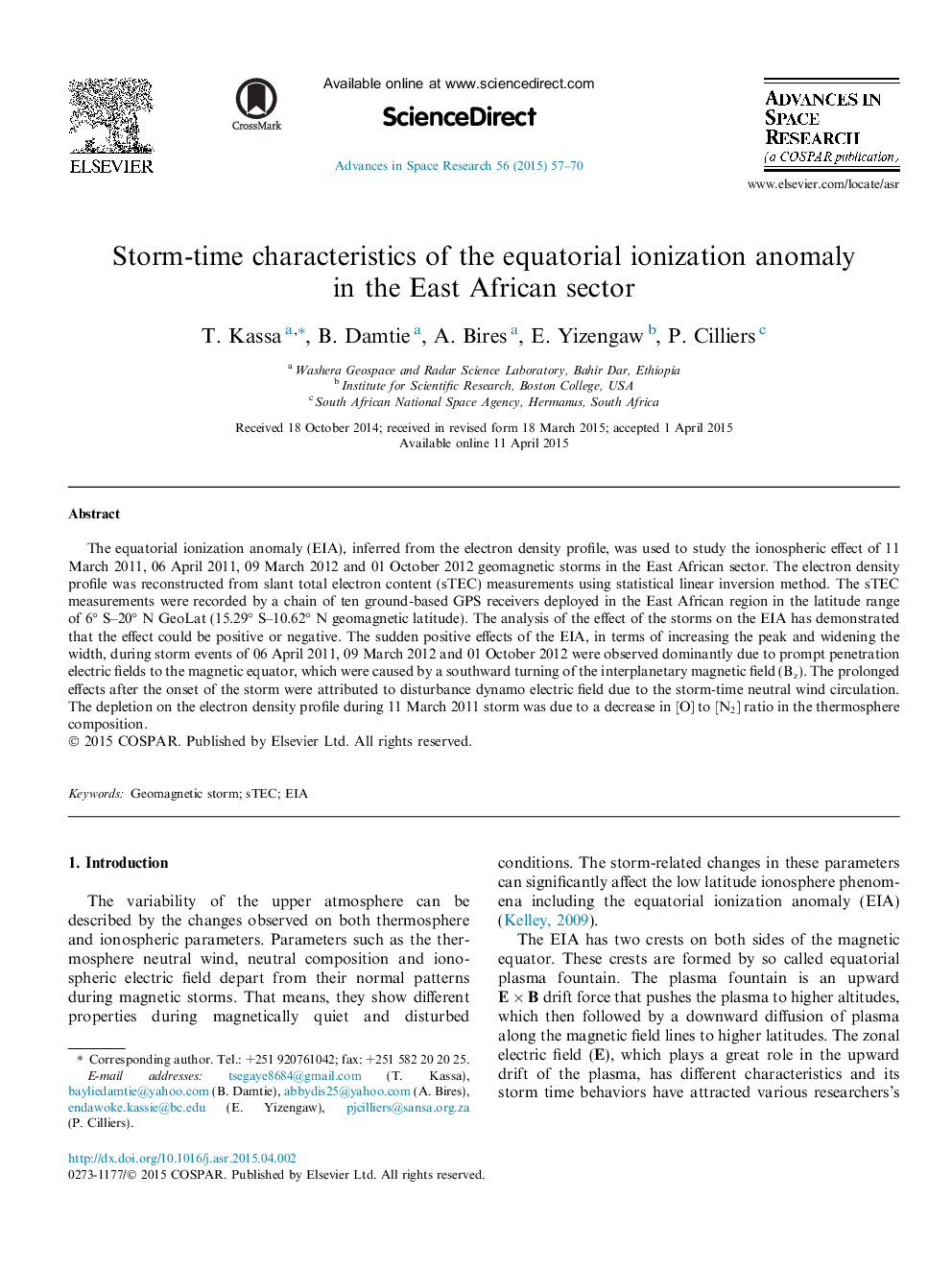| Article ID | Journal | Published Year | Pages | File Type |
|---|---|---|---|---|
| 1763781 | Advances in Space Research | 2015 | 14 Pages |
•Storm-time E, neutral wind and composition can affect the EIA’s pattern.•Geomagnetic storms can intensify or suppress the EIA’s development.•The storm effect on the EIA could be positive or negative.•The sudden effect on the EIA could be associated with the PPEF.
The equatorial ionization anomaly (EIA), inferred from the electron density profile, was used to study the ionospheric effect of 11 March 2011, 06 April 2011, 09 March 2012 and 01 October 2012 geomagnetic storms in the East African sector. The electron density profile was reconstructed from slant total electron content (sTEC) measurements using statistical linear inversion method. The sTEC measurements were recorded by a chain of ten ground-based GPS receivers deployed in the East African region in the latitude range of 6° S–20° N GeoLat (15.29° S–10.62° N geomagnetic latitude). The analysis of the effect of the storms on the EIA has demonstrated that the effect could be positive or negative. The sudden positive effects of the EIA, in terms of increasing the peak and widening the width, during storm events of 06 April 2011, 09 March 2012 and 01 October 2012 were observed dominantly due to prompt penetration electric fields to the magnetic equator, which were caused by a southward turning of the interplanetary magnetic field (BzBz). The prolonged effects after the onset of the storm were attributed to disturbance dynamo electric field due to the storm-time neutral wind circulation. The depletion on the electron density profile during 11 March 2011 storm was due to a decrease in [O] to [N2N2] ratio in the thermosphere composition.
